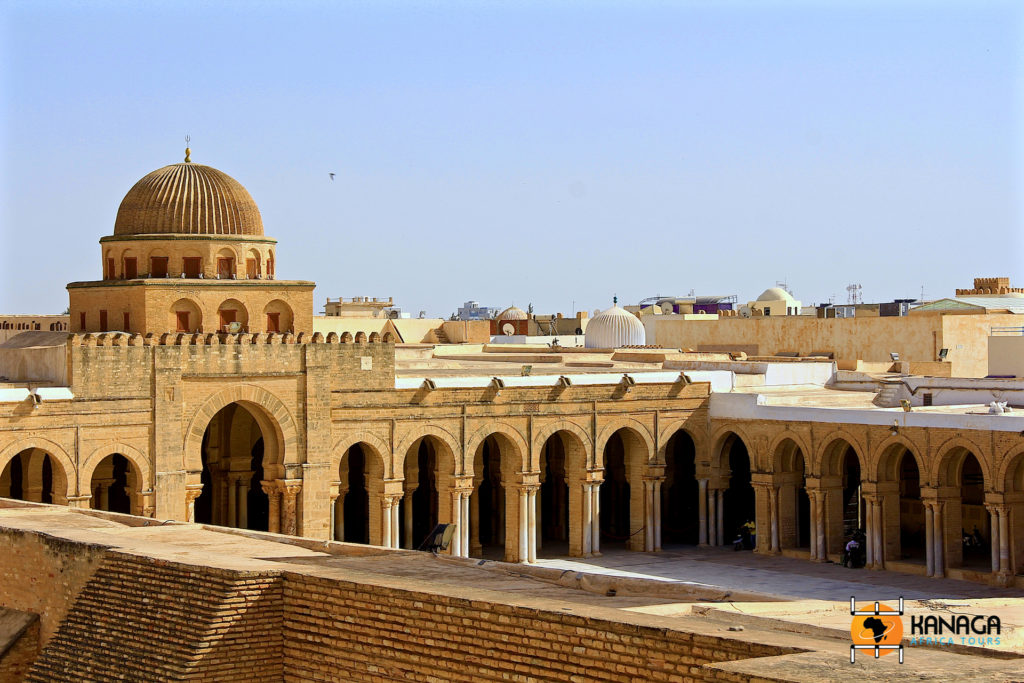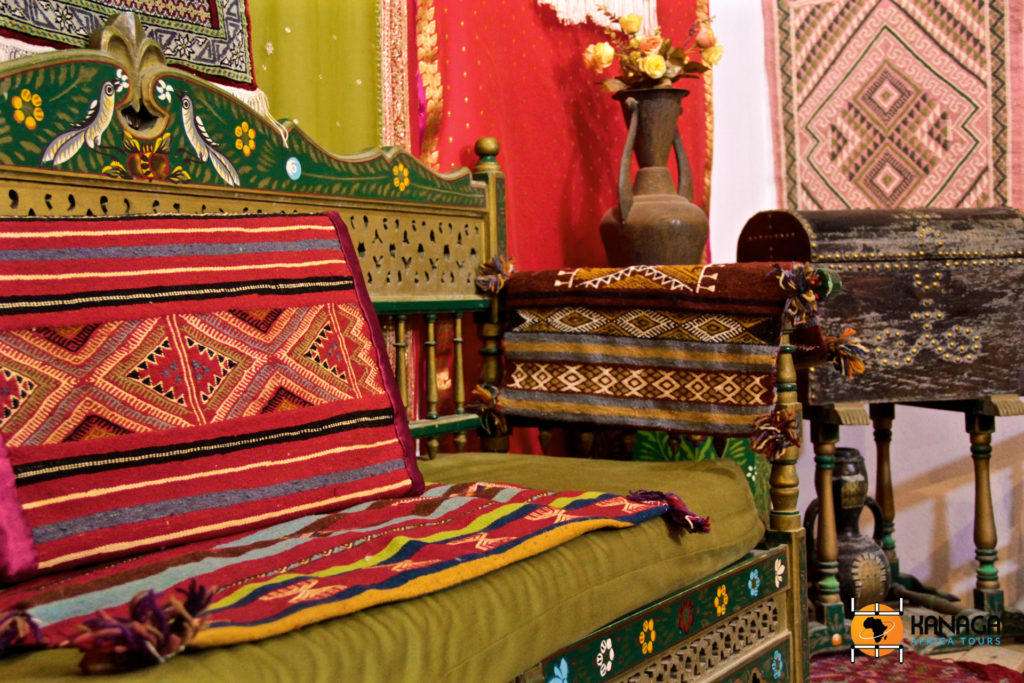© I. Fornasiero
Considered the religious capital of Tunisia and the fourth holy city of Islam after Mecca, Medina and Jerusalem, Kairouan was founded in 670 AD, at the time of the Arab conquest of North Africa.
Thanks to its favourable position at the crossroads of the caravan routes from the Berber lands towards the coast, it became the first capital of the Muslim Maghreb, reaching the height of its glory in the 9th century, under the dynasty of the Aghlabid emirs. This period saw the construction of the Great Mosque, one of the most important monuments of Islamic architecture, with its imposing minaret inspired by the Lighthouse of Alexandria, elegant horseshoe-shaped galleries, a splendid prayer hall supported by dozens and dozens of paired columns, and the ‘minbar’, the wooden pulpit considered the oldest in all of Islam.
The charm of Kairouan, a holy city anchored in a distant past, is concentrated in its Medina, with its irregular profile, which covers an area of 30 hectares, surrounded by walls within which stand some 50 mosques, various mausoleums and zaouïa (sacred places dedicated to the memory of devout men).
As you climb the crenellated ramparts surrounding the old town, you can admire the sober elegance of the urban fabric: alleyways lined with white houses with blue doors, white domes and minarets the warm colour of sand. Among the souks, the numerous craft shops seem to compete with each other in the display of sweets and carpets, the true pride of the city!
In the Carpet Museum, housed in a stately home, the most precious carpets are kept, from the classic Kairouan carpets, recognisable by their central medallion surrounded by flowers, to the thicker, brightly coloured carpets made in the south of the country.
A curiosity is the ancient and revered Bir Barouta Well, where water is extracted through a mechanism of wheels and buckets driven by a dromedary that circles the reservoir.
Outside the Medina, the main centre of interest is certainly the Zaouïa Sidi Sahib, with its patios, its rooms magnificently decorated with multicoloured ceramics, and its plaster walls and niches worked in such a way as to appear embroidered. It was built in the 17th century and is known as the Barber Mosque because it houses the remains of a companion of Maometto who is said to have been buried with a medallion containing three hairs from the Prophet’s beard around his neck.
A high point of interest are the Aghlabid Reservoirs, huge circular tanks located on the edge of the old town. These are water reservoirs built in the 9th century, part of an immense hydraulic complex, exceptional for the period in which it was designed.







